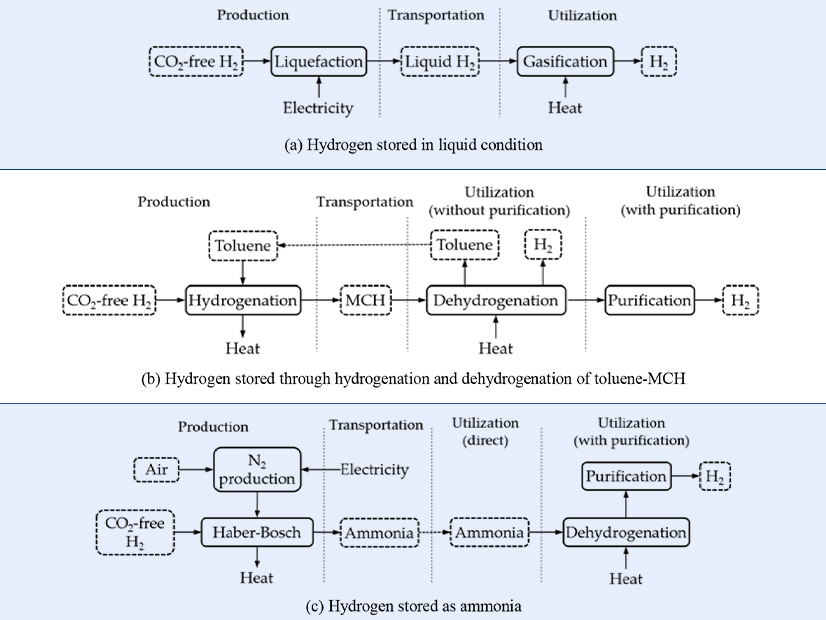
Green hydrogen electricity is a waste of money and time, says columnist Steve Huntoon.
Hydrogen hasn’t gotten this much publicity since the Hindenburg. And never more U.S. taxpayer money, now estimated at $137 billion over the next 10 years.[1] And of course, federal policymakers waving wands over hydrogen, begging the question posed by The Lovin’ Spoonful, “Do You Believe in Magic?”[2]
Here we’ll cover some reality about hydrogen in the electricity sector.
- Hydrogen does not exist on Earth as a standalone atom. You have to make it by separating it from a molecule it is part of, like water or a fossil fuel.
- There are different ways of making hydrogen, and each way has been given its own color – nine and counting.[3] I’m not going to get into the debates about grey hydrogen (from fossil fuels), blue hydrogen (from fossil fuels with carbon capture), or myriad other colors. Here we’ll just talk about pure green hydrogen, from electrolysis of water using green electricity. Basically you use green electricity (from wind, solar, etc.) to separate the hydrogen and oxygen atoms that are in water molecules.
- Green hydrogen electricity is very inefficient. You need a supply of electricity (and ultrapure water[4]) for the electrolysis, a way to store and transport the hydrogen (or an intermediary carrier like ammonia), and then a generator to turn the hydrogen back into electricity. Essentially two round trips.
- The pure energy equivalence between electricity and hydrogen is 39.4 kWh to produce 1 kg of hydrogen,[5] and the most efficient electrolysis technology is around 80%,[6] so best case it takes 49.3 kWh to produce 1 kg of hydrogen. That creates the hydrogen. If the green source of electricity costs say $30/MWh,[7] then with the most efficient electrolysis the hydrogen costs $37.5/MWh equivalent.
- Now we need to store and transport the hydrogen.[8] The most efficient storage and transportation method is probably converting hydrogen to ammonia, storing and transporting ammonia, and converting ammonia back to hydrogen.[9] The round-trip efficiency is 34%.[10] So that $37.50/MWh hydrogen equivalent from the prior paragraph becomes $110.30/MWh hydrogen equivalent from the ammonia round trip.
- Now we’ll use this hydrogen to generate electricity. The most efficient turbine I can find for turning hydrogen back into electricity is the GE turbine 9F.04 in the 1×1 combined cycle configuration at 443 MW, which GE’s calculator says would require 22,307 kg/hour,[11] which converts on a pure energy basis to 879 MWh,[12] for a conversion loss of 50% (output of 443 MWh divided by input of 879 MWh). So if the cost of the hydrogen input is $110.30/MWh, the cost of the converted electricity output is $220.60/MWh. Thus, the initial $30/MWh electricity supply we started with has a delivered electricity cost of $220.60/MWh.
- Just so we’re clear, $30/MWh green electricity becomes $220.60/MWh green electricity, a cost increase of 735%. Put another way, it would take 7 MWh of green electricity at the source to end up with 1 MWh of green electricity delivered to consumers.[13] So for every 1 MWh used, 6 MWh are wasted.
- The foregoing is just about the energy conversion losses. The capital and non-fuel operating costs of the water purifier, electrolyzer, storage, transportation and generation facilities are extra. And those costs are, to use a technical term, ginormous.
- Oh, if you’ve been following hydrogen news you may note that the analysis I provide here is in terms of end-to-end MWh costs, whereas hydrogen costs are talked about in terms of $/kg with a moonshot, aka “Hydrogen Shot,” objective of getting green hydrogen’s current cost of $4-6/kg down to $1/kg.[14] I doubt that’s realistic but in any event it’s largely irrelevant to green hydrogen electricity. The dollar per kg cost is cost at the outlet of the electrolyzer, before the losses and other costs of storage, transportation and generation. What really matters for green hydrogen electricity is the cost per MWh you start with and the cost per MWh you end with.
- By the way, few gas turbine models can burn 100% hydrogen, and many turbine models are limited to hydrogen percentages like 5%, 15% and 30%.[15] Since thousands of gas turbines are supplied by dozens of major interstate gas pipelines, it begs the question of how various custom hydrogen-natural gas blends would be mixed, stored and transported across the country. And that still leaves the carbon emissions from the natural gas in the blended stream — if carbon capture were economic for that then it would be economic without using any of the incredibly expensive hydrogen.
- By the way, blending hydrogen into existing natural gas systems for transportation is unrealistic (as are total conversions). Not only are there many physical incompatibility issues, such as those the National Renewable Energy Laboratory has described,[16] but hydrogen requires three times the volume for the same energy content as natural gas,[17] so blending hydrogen reduces the amount of energy transported (and stored via line pack).[18] And millions of end-use appliances served by a given pipeline are incompatible with a hydrogen blend above 20-30%[19] which means either: (1) the dominant natural gas supply would continue to create carbon emissions (or be wasted), or (2) there would need to be a one-time total conversion to hydrogen entailing modifications/replacements of all these appliances at the same time. Good luck with those options.
- And one more thing. Notwithstanding the Department of Energy’s claim that its recently announced “hydrogen hubs” will “slash harmful emissions,”[20] green hydrogen electricity creates more NOx emissions than natural gas electricity. As much as twice for equivalent energy content.[21] This does not mesh with public health and environmental justice concerns.
[1] https://about.bnef.com/blog/hydrogen-subsidies-skyrocket-to-280-billion-with-us-in-the-lead/
[2] https://www.youtube.com/watch?v=b8qZ4qzDICg.
[3] https://www.nationalgrid.com/stories/energy-explained/hydrogen-colour-spectrum
[4] Electrolysis requires 9 kg of ultrapure water for every kg of hydrogen. A discussion of water supply requirements for electrolysis is here, https://hydrogentechworld.com/water-treatment-for-green-hydrogen-what-you-need-to-know.
[5] https://www.sciencedirect.com/science/article/pii/S2666821121000880, section 2.1.
[6] https://op.europa.eu/en/publication-detail/-/publication/c4000448-b84d-11eb-8aca-01aa75ed71a1, Table 2-A. Of note, the most efficient electrolysis technology appears to have the shortest lifetime.
[7] This sample $30/MWh is a somewhat optimistic take on the ranges of levelized costs of renewable energy sources presented by Lazard, https://www.lazard.com/media/2ozoovyg/lazards-lcoeplus-april-2023.pdf, slide 3.
[8] Storage and transportation are necessary because all green electricity that could be used as electricity as generated should not involve hydrogen at all. Projects that would involve diverting grid-connected green electricity generation into hydrogen production, rather than simply consuming the green electricity as generated, make no sense.
[9] https://www.sciencedirect.com/science/article/pii/S1876610219308677 (download the pdf for the full article).
[10] Prior source, Figure 1(c) and Table 2.
[11] https://www.ge.com/gas-power/future-of-energy/hydrogen-fueled-gas-turbines/hydrogen-calculator.
[12] https://www.sciencedirect.com/science/article/pii/S2666821121000880, section 2.1 (39.4 kwh per kg).
[13] There are unusual situations where this analysis may not apply, such as where the green electricity source would otherwise be curtailed and efficient storage like salt caverns is available.
[14] https://liftoff.energy.gov/wp-content/uploads/2023/05/20230321-H2-Pathways-to-Commercial-Liftoff-Webinar-vF_web.pdf
[15] https://www.ge.com/content/dam/gepower-new/global/en_US/downloads/gas-new-site/resources/GEA33861%20Power%20to%20Gas%20-%20Hydrogen%20for%20Power%20Generation.pdf, page 12.
[16] https://www.nrel.gov/docs/fy23osti/81704.pdf
[17] https://www.ge.com/content/dam/gepower-new/global/en_US/downloads/gas-new-site/resources/GEA33861%20Power%20to%20Gas%20-%20Hydrogen%20for%20Power%20Generation.pdf, page 10.
[18] https://www.nrel.gov/docs/fy23osti/81704.pdf. NREL points out (page 14) that it may be possible to compensate for lower energy content with increased flow via higher pressure, however higher pressure would be inconsistent with the lower pressure likely needed for steel integrity.
[19] NREL study, pages 37-39.
[20] https://www.energy.gov/articles/biden-harris-administration-announces-7-billion-americas-first-clean-hydrogen-hubs-driving.
[21] https://www.ge.com/content/dam/gepower-new/global/en_US/downloads/gas-new-site/future-of-energy/hydrogen-for-power-gen-gea34805.pdf, page 14.

